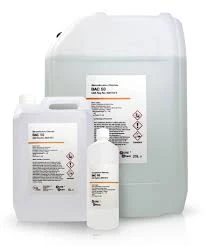Overview of Coagulant and Flocculant Chemicals for Water Treatment Applications
The Importance of Coagulant and Flocculant Chemicals in Water Treatment
Water treatment is a critical process in ensuring that our water supply remains clean, safe, and suitable for human consumption and industrial use. Among the essential chemicals used in this process, coagulants and flocculants play a pivotal role. Understanding how these chemicals work and their importance in water treatment can help us appreciate their role in maintaining water quality.
What are Coagulants?
Coagulants are substances that promote the agglomeration of suspended particles in water. When added to water, they neutralize the charges on particles, allowing them to come together and form larger aggregates, known as flocs. Commonly used coagulants include aluminum sulfate (alum), ferric chloride, and polyaluminum chloride. These chemicals are particularly effective in removing turbidity, organic matter, and microorganisms from water.
The coagulation process typically involves several steps. Initially, when a coagulant is introduced into the water, it forms a solution that interacts with suspended particles. This interaction causes particles to collide and bind together, forming larger aggregates. The effectiveness of coagulants can depend on several factors, including pH levels, temperature, and the nature of the impurities present in the water.
The Role of Flocculants
While coagulants initiate the aggregation of particles, flocculants further enhance this process by facilitating the growth of flocs, contributing to improved settling and removal during sedimentation. Flocculants are higher molecular weight polymers, which help to bridge the gaps between the flocs formed by coagulants, encouraging them to clump together into larger and denser structures.
Flocculants can be categorized into organic and inorganic types. Organic flocculants, often based on polyacrylamide, have gained popularity in various applications due to their effectiveness and versatility. Inorganic flocculants, like bentonite clay, are also utilized but have specific applications depending on the water's characteristics.
coagulant and flocculant chemicals

The Combined Effect
The combination of coagulants and flocculants can significantly enhance the efficiency of water treatment processes. In municipal wastewater treatment facilities, the use of both types of chemicals can help to achieve high-quality effluent. Good coagulation and flocculation results in reduced turbidity levels, lower chemical oxygen demand (COD), and improved removal of pathogens.
Moreover, the proper dosage and timing of these chemicals are crucial. Operators must balance the amounts used to avoid under- or overdosing, which can lead to incomplete floc formation or excessive sludge production. Continuous monitoring and adjustments based on water quality tests are essential for optimal performance.
Environmental Considerations
The use of coagulants and flocculants in water treatment not only improves water quality but also contributes to environmental protection. By effectively removing contaminants, these chemicals help reduce the discharge of harmful substances into natural water bodies, protecting aquatic ecosystems and public health.
As the demand for clean and safe water continues to rise, innovations in coagulant and flocculant formulations are also evolving. Researchers are exploring more environmentally friendly alternatives, biodegradable options, and materials derived from renewable sources. Such developments are crucial for promoting sustainability in water treatment practices.
Conclusion
In summary, coagulants and flocculants are indispensable components of modern water treatment processes. Their ability to enhance the removal of contaminants ensures a safe and reliable water supply for various uses. As the field continues to advance, the integration of innovative technologies will further optimize their effectiveness while minimizing environmental impacts. Understanding the role of these chemicals is vital for anyone involved in water treatment, policy-making, or environmental management.
-
Water Treatment with Flocculant Water TreatmentNewsJun.12,2025
-
Polymaleic AnhydrideNewsJun.12,2025
-
Polyaspartic AcidNewsJun.12,2025
-
Enhance Industrial Processes with IsothiazolinonesNewsJun.12,2025
-
Enhance Industrial Processes with PBTCA SolutionsNewsJun.12,2025
-
Dodecyldimethylbenzylammonium Chloride SolutionsNewsJun.12,2025





